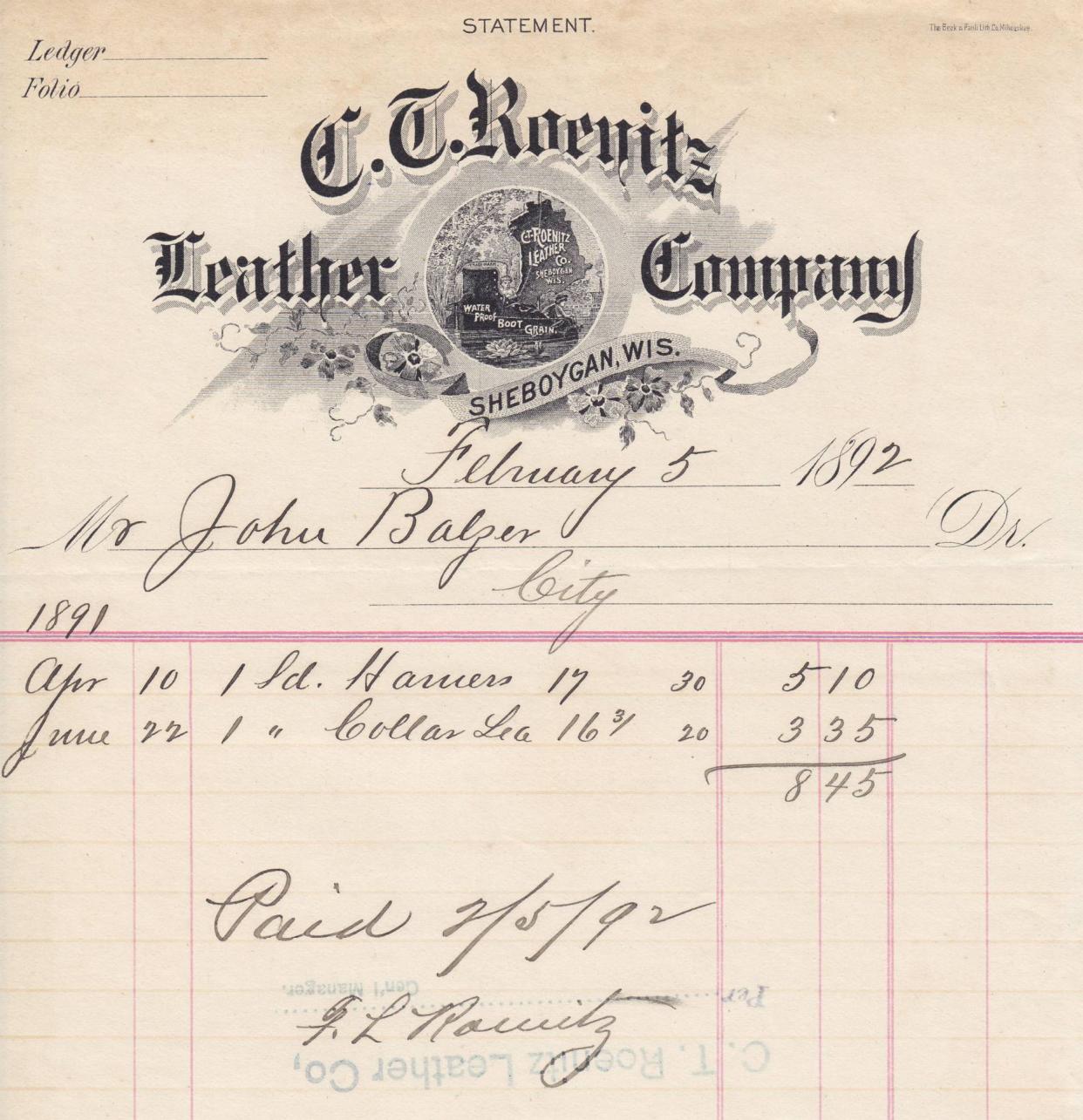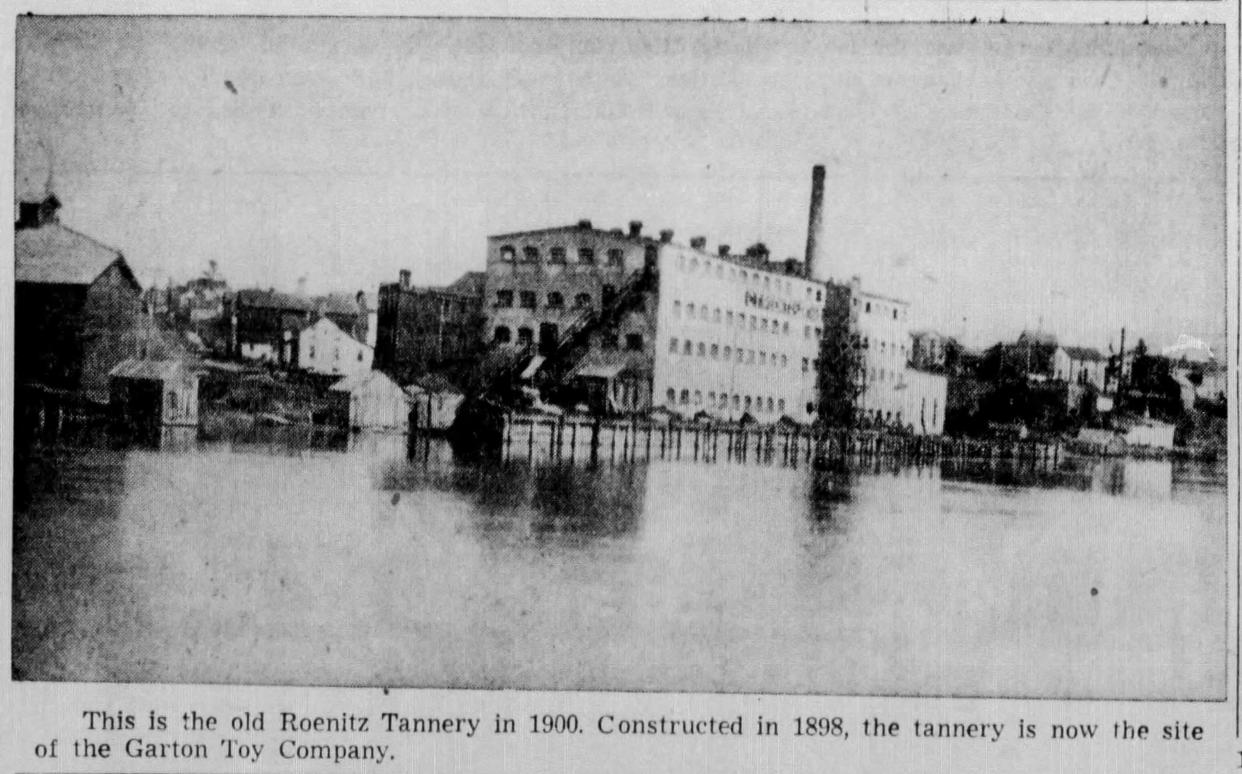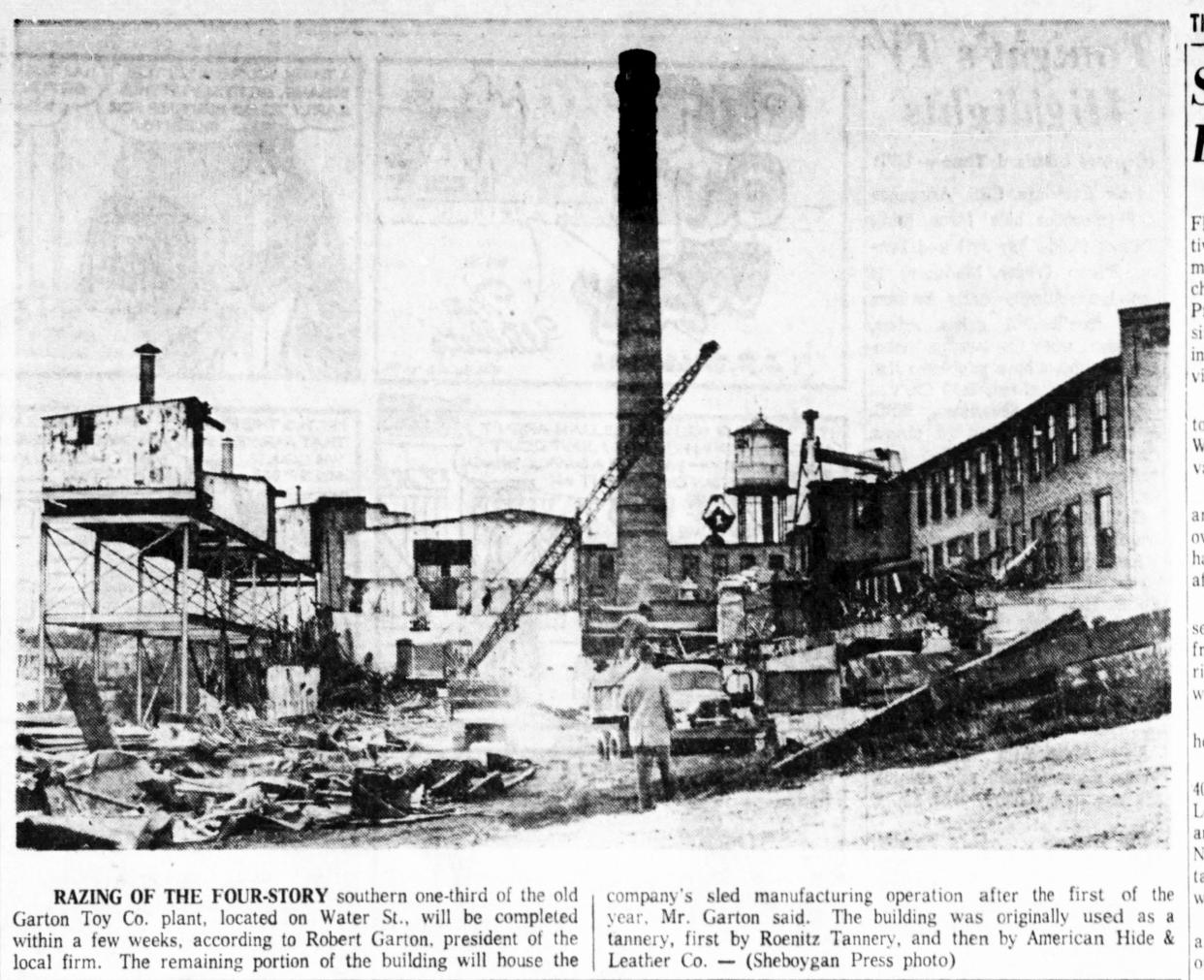Sheboygan site on Eighth Street, now storefronts and apartments, was once a tannery and gathering spot
SHEBOYGAN — German immigrant Charles T. Roenitz arrived in the United States in 1850. Born in Saxony, Germany, he united with his brother, William, after working in Milwaukee for six months to begin what is known as the Roenitz Tannery in 1853.
The brothers' capital consisted of a few hundred dollars saved from their earnings after coming to this country, according to an article written by Jan Hildebrand.
Charles T. and William E. Roenitz purchased an Eighth Street lot in December 1861 and constructed a two-story building. The building's original purpose was to be the Roenitz tannery, shoe business and housing.
The buildings were totally completed by 1865. It was at the southeast corner of Wisconsin Avenue and Eighth Street. People would gather in front of the stores to discuss the news of the day.
To see the slider larger,click here.
At the time, the Civil War was a big topic of discussion, according to Sheboygan Press clippings provided by the Sheboygan County Historical Research Center.
The Eighth Street factory was a 25-foot-by-40-foot building for the tannery. Besides themselves at the time they employed one other man. The building was located where the H.C. Prange's store once stood.
Next door to the tannery was their two-story, two-family home with a basement where the brothers and their families lived.
Upon the death of Charles T. Roenitz, his brother became the sole proprietor of the tannery.
Business was soon to get bigger.

From those humble beginnings, William Roenitz associated with him his sons, Frank L. and Charles H., and eight years later the C.T. Roenitz Leather Company was incorporated, with a capital stock of $100,000, which has since been increased to $200,000. The company would build on the Sheboygan riverfront.
The first officers were C.T. Roenitz, president; Frank L. Roenitz, vice president; and Charles H. Roenitz, secretary. The only official change was made at the death of the father in 1892, when Frank L. became president.
From the "Portrait and Biographical Record of Sheboygan County": "The Roenitz Leather Company is recognized as one of the substantial and important industries in Sheboygan. The grounds comprise a whole block, and the main building is 100 x 471 feet, with an addition 77 x 126 feet, all four stories in height. Besides, they have a pump-room, boiler-room and engine-room."

The company employed 300 men, turning out a finished product of 350,000 sides of leather for 1893.
From a very small beginning, this vast enterprise had been built up by the Roenitz family, father and sons.
When the first telephone wires arrived in the city, those wires caused a problem for the arrival of tan bark by ship near Penn Avenue. A sailor would, using a pitchfork from the top mast, hold the wires higher to permit the passage of the boat to the company, according to a historical story by Alfred Jung in a 1962 Press advertisement.
RELATED - Sheboygan celebrates end of World War I
Working the tannery was dangerous back in the 19th and 20th centuries, according to a Press article by Jan Hildebrand in 2002. In 1900, 35-year-old German immigrant Frank Reif, a mason repairing a wall, was critically injured at the Roenitz Tannery during a horrific accident when his clothing got caught in a machinery belt. He was hurled around the shaft and was dashed to the floor. He was conscious and spoke to people around him, until he died a short time later.

In the 1880s, H.C. Prange leased the original tannery building. By 1898, H.C. Prange purchased one of the buildings from the Chas. T. Roenitz estate. Soon after, the building was then transferred to the H.C. Prange Company when that company was organized. By 1903, Prange would have a majority of the block. The buildings were torn down in 1923 to make way for the new modern four-story structure that Sheboygan would embrace.
That four-story building would serve as the H.C. Prange Company for many years, until 1982, when a water main leak forced the building's demolition of that 1923 store. A new store was built on that site and would eventually be owned by several different department store chains until 2014 when Boston Store closed the store. That store would be torn down and used as an open concert venue until a new apartment complex and storefronts were built that would use most of the site.
Gary C. Klein can be reached at 920-453-5149 or gklein@gannett.com. Follow him on Twitter at @leicaman99.
This article originally appeared on Sheboygan Press: Roenitz Brothers built a tannery factory in Sheboygan in the 1860s
